Showing Spotlights 289 - 296 of 2838 in category All (newest first):
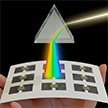 Researchers have made significant strides in developing photodetectors made with tungsten disulfide (WS2) on paper substrates for disposable electronics. This research, which addresses the growing issue of electronic waste, has yielded promising results with WS2 photodetectors on paper substrates reaching photo responses comparable to commercially available silicon photodetectors. The findings have significant implications for ubiquitous electronics and low-performance sensing applications.
Researchers have made significant strides in developing photodetectors made with tungsten disulfide (WS2) on paper substrates for disposable electronics. This research, which addresses the growing issue of electronic waste, has yielded promising results with WS2 photodetectors on paper substrates reaching photo responses comparable to commercially available silicon photodetectors. The findings have significant implications for ubiquitous electronics and low-performance sensing applications.
Feb 20th, 2023
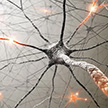 Neuromorphic engineering is focused on developing computer hardware and software systems that mimic the structure, function, and behavior of the human brain. The goal of neuromorphic engineering is to create computing systems that are much more energy-efficient, scalable, and adaptive than conventional computer systems, and that can solve complex problems in a manner that is similar to how the brain solves problems. Neuromorphic computing is a specific application of neuromorphic engineering. It involves the use of hardware and software systems that are designed to process information in a manner that is similar to how the human brain processes information.
Neuromorphic engineering is focused on developing computer hardware and software systems that mimic the structure, function, and behavior of the human brain. The goal of neuromorphic engineering is to create computing systems that are much more energy-efficient, scalable, and adaptive than conventional computer systems, and that can solve complex problems in a manner that is similar to how the brain solves problems. Neuromorphic computing is a specific application of neuromorphic engineering. It involves the use of hardware and software systems that are designed to process information in a manner that is similar to how the human brain processes information.
Feb 13th, 2023
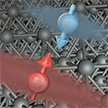 Spintronics is a technology that utilizes the spin of electrons - in addition to their charge - in order to store and process information. Unlike traditional electronics, which rely on the movement of electrons to perform their functions, spintronics uses the intrinsic angular momentum of electrons to achieve the same results. Spintronics offers the potential to address some limitations of traditional, charge-based computing and it has the potential for developing new types of devices such as spin-based transistors and logic gates.
Spintronics is a technology that utilizes the spin of electrons - in addition to their charge - in order to store and process information. Unlike traditional electronics, which rely on the movement of electrons to perform their functions, spintronics uses the intrinsic angular momentum of electrons to achieve the same results. Spintronics offers the potential to address some limitations of traditional, charge-based computing and it has the potential for developing new types of devices such as spin-based transistors and logic gates.
Feb 1st, 2023
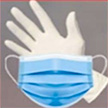 The extensive use of polymer-made, disposable and non-biodegradable COVID-19 pandemic health protectives like surgical face masks, hand gloves and PPE kits, combined with a lack of proper waste recycling systems, considerably increased plastic pollution around the world. Researchers are harnessing a new way to turn these COVID-19 pandemic wastes towards sensor design by fabricating a mask-glove-based contact-separation triboelectric nanogenerator (MG-CS TENG).
The extensive use of polymer-made, disposable and non-biodegradable COVID-19 pandemic health protectives like surgical face masks, hand gloves and PPE kits, combined with a lack of proper waste recycling systems, considerably increased plastic pollution around the world. Researchers are harnessing a new way to turn these COVID-19 pandemic wastes towards sensor design by fabricating a mask-glove-based contact-separation triboelectric nanogenerator (MG-CS TENG).
Jan 20th, 2023
 Nanotechnology has the ability to completely transform the health care sector, particularly in developing countries like South Africa, where access to effective healthcare is still a challenge for millions of people living in poverty-stricken environments. Many African countries, despite having policies and strategies in place, struggle to allocate sufficient resources for research in nanomedicine. Most of the research conducted on the subject in Africa is focused on academic interests, rather than practical applications.
Nanotechnology has the ability to completely transform the health care sector, particularly in developing countries like South Africa, where access to effective healthcare is still a challenge for millions of people living in poverty-stricken environments. Many African countries, despite having policies and strategies in place, struggle to allocate sufficient resources for research in nanomedicine. Most of the research conducted on the subject in Africa is focused on academic interests, rather than practical applications.
Jan 15th, 2023
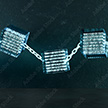 Blockchain technology can be used in various ways to improve the transparency, integrity, and security of data in scientific research. For example, it can be used to create a tamper-evident record of research data, facilitate collaborations between researchers, protect intellectual property, fund scientific projects, and track the movement of materials throughout the supply chain. By using blockchain, researchers can ensure that their work is properly credited and cited, and that the data they collect is accurately recorded and preserved for future use.
Blockchain technology can be used in various ways to improve the transparency, integrity, and security of data in scientific research. For example, it can be used to create a tamper-evident record of research data, facilitate collaborations between researchers, protect intellectual property, fund scientific projects, and track the movement of materials throughout the supply chain. By using blockchain, researchers can ensure that their work is properly credited and cited, and that the data they collect is accurately recorded and preserved for future use.
Jan 11th, 2023
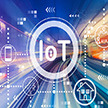 Key components that are essential to the functioning of the Internet of Things include sensors and devices, network connectivity, data storage and processing, user interfaces, and security. Many aspects of these elements can be enhanced by nanotechnologies. Nanotechnology can enhance the performance and capabilities of IoT devices by enabling the creation of smaller, more efficient, and more versatile sensors, antennas, and processors. These improvements can lead to greater accuracy, energy efficiency, and versatility in a variety of applications, including healthcare, industrial monitoring, and environmental sensing.
Key components that are essential to the functioning of the Internet of Things include sensors and devices, network connectivity, data storage and processing, user interfaces, and security. Many aspects of these elements can be enhanced by nanotechnologies. Nanotechnology can enhance the performance and capabilities of IoT devices by enabling the creation of smaller, more efficient, and more versatile sensors, antennas, and processors. These improvements can lead to greater accuracy, energy efficiency, and versatility in a variety of applications, including healthcare, industrial monitoring, and environmental sensing.
Jan 9th, 2023
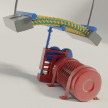 A new motorized three-point-bending apparatus has been developed that is capable of automating strain engineering experiments on two-dimensional (2D) materials. The setup can be used to apply precise, uniform strain to 2D materials such as MoS2, allowing researchers to study the effects of strain on the electrical and optical properties of these materials. The system can also be used to study straintronic devices, devices whose output characteristics can be adjusted by means of applied strain.
A new motorized three-point-bending apparatus has been developed that is capable of automating strain engineering experiments on two-dimensional (2D) materials. The setup can be used to apply precise, uniform strain to 2D materials such as MoS2, allowing researchers to study the effects of strain on the electrical and optical properties of these materials. The system can also be used to study straintronic devices, devices whose output characteristics can be adjusted by means of applied strain.
Dec 16th, 2022
 Researchers have made significant strides in developing photodetectors made with tungsten disulfide (WS2) on paper substrates for disposable electronics. This research, which addresses the growing issue of electronic waste, has yielded promising results with WS2 photodetectors on paper substrates reaching photo responses comparable to commercially available silicon photodetectors. The findings have significant implications for ubiquitous electronics and low-performance sensing applications.
Researchers have made significant strides in developing photodetectors made with tungsten disulfide (WS2) on paper substrates for disposable electronics. This research, which addresses the growing issue of electronic waste, has yielded promising results with WS2 photodetectors on paper substrates reaching photo responses comparable to commercially available silicon photodetectors. The findings have significant implications for ubiquitous electronics and low-performance sensing applications.
 Subscribe to our Nanotechnology Spotlight feed
Subscribe to our Nanotechnology Spotlight feed





